| Integrated wetlands Ecosystem to mitigate carbon emissions
Increased and unprecedented population growth has resulted in enormous stress on potable water from a daily consumption point of view and also in regards to increased wastewater generated by the city. Unplanned growth has led to radical land use conversion of forests, surface water bodies, etc. with the irretrievable loss of land prospects. Land use analyses show 584% growth in built-up area during the last four decades with the decline of vegetation by 66% and water bodies by 74%. Analyses of the temporal data reveals an increase in urban built up area of 342.83% (during 1973 to 1992), 129.56% (during 1992 to 1999), 106.7% (1999 to 2002), 114.51% (2002 to 2006) and 126.19% from 2006 to 2010 (Ramachandra et al., 2012).
Rapid urbanisation in recent times has led to the mammoth wastewater generation. Untreated or partially treated wastewaters are fed to surface water that finds its way into ground water sources. The sustained inflow of untreated or partially treated sewage to wetlands leads to the enrichment of nutrients such as carbon (C), nitrogen (N) and phosphorus (P), evident from the algae bloom and profuse growth of macrophytes. This has lead to the contamination of existing water resources with pathogens and nutrients resulting in algal bloom due to eutrophic status of surface water, thereby contaminating the nearby groundwater sources affecting the human health. In the other hand macrophytes grow profusely in this nutrient rich environment and progressively cover the entire surface of the water body hindering the passage of sunlight and diffusion of gases to the underlying water layers. Absence of sunlight in these parts affects algal growth and photosynthetic O2 generation and critically depletes the dissolved oxygen concentration and thence affects the local biota.
Treatment and disposal of wastewater generated in the neighbourhood constitute key environmental challenges faced in urban localities due to burgeoning population in the recent decade. Nutrient laden wastewater generated in municipalities is either untreated or partially treated and is directly fed into the nearby water bodies regularly, resulting in nutrient enrichment resulting in algal blooms. Conventional wastewater treatment options are energy and capital intensive apart from their inability to remove nutrient completely. In this backdrop, algal processes are beneficial and remove nutrients with carbon sequestration and resultant biomass production. Algae grows rapidly and uptakes nutrients (C, N and P) available in the wastewater (Mahapatra et al., 2013; Sharachchandra Lele et. al, 2013; Report GOI, 2008) and hence are useful in nutrient remediation. Treatment of sewage and letting into wetlands would help in further treatment (removal of N, P and heavy metals). This also prevents contamination of groundwater resources. Thus wetlands provide a cost effective option to handle sewage generated in the community and also helps in addressing the water crisis in the region.
Microalgae and native macrophytes of the wetlands help in the treatment due to abilities to uptake nutrients and heavy metals. Techniques have been developed for exploiting the algae’s fast growth and nutrient removal capacity (Karin Larsdotter, 2006). The nutrient removal is basically an effect of assimilation of nutrients as the algae grow. Also, nutrient stripping happens the due to high pH induced by the algae as in ammonia volatilization, phosphorus precipitation, etc.
4.1 Wetlands/Algae pond as wastewater treatment systems
Wetlands aid in water purification (nutrient, heavy metal and xenobiotics removal) and flood control through physical, chemical, and biological processes. When sewage is released into an environment containing macrophytes and algae a series of actions takes place. Through contact with biofilms, plant roots and rhizomes processes like nitrification, ammonification and plant uptake will decrease the nutrient level (nitrate and phosphates) in wastewater (Garcia et.al, 2010). Algae based lagoons treat wastewater by natural oxidative processes. Various zones in lagoons function equivalent to cascaded anaerobic lagoon, facultative aerated lagoons followed by maturation ponds (Mahapatra et al., 2013b). Microbes aid in the removal of nutrients and are influenced by wind, sunlight and other factors (Mahapatra et.al, 2011b,c, 2013b).
The conventional wastewater treatment systems (sewage treatment systems) are expensive and require input of external energy sources (e.g.; electricity, organic carbon) and chemical additives. These treatment systems generate concentrated waste streams necessitating environmentally sound disposal. There is an urgent need to develop innovative, environmental friendly and cost effective approaches for treating sewage generated in the community every day. Untreated sewage leads to the neighbourhood contamination of land and water resources (groundwater). An easy way to check the sewage contamination is to test the level of nutrients (nitrates and phosphates). Nitrate is a substance that develops from organic waste. Algae convert nitrate into organic compounds (proteins, lipids) through photosynthesis in the presence of sunlight. Algae can exhibit growth rates that are higher than other plants due to their extraordinarily efficient light and nutrient utilization. By taking advantage of rapid availability of nutrient enriched water, high solar intensity and favorable microclimate for algal growth, higher densities of algae can be grown continuously that provides ample biomass and at the same time treats wastewater within a short period of time.
Algal bacterial symbiosis is very effective in these tropical conditions. Algae the primary producers generate O2 (during photosynthesis) which aid in the efficient oxidation of organic matter with the help of the chemo-organotrophic bacteria. The type and diversity of the algae grown are potential indicators of treatment process (Ramachandra et al., 2012; Mahapatra et al., 2013a,b; Mahapatra and Ramachandra, 2012; 2013; Mahapatra et al., 2014). And bacterial system disintegrates and degrades the organic matter providing the algae with an enriched supply of CO2, minerals and nutrients.
Focus of the current investigation is to assess the efficacy of wetlands in Jakkur lake system. This has been done through water quality assessment (physicochemical analysis) at various stages of the integrated wetland system consisting of sewage treatment plant (10 MLD), wetlands (with macrophytes), algal pond and Jakkur lake (Fig. 13). Nitrate and phosphate levels were monitored at various stages of wetlands ecosystem.
Jakkur Lake (Fig. 13) situated at 13º 04'N and 77° 36'E, North East of Bangalore. Ten MLD sewage treatment plant is functional in this locality. Partially treated water is let into Jakkur lake through wetlands (consisting of emergent macrophytes and algae). Water samples were collected (Fig. 13) from Inlet (S6), outlets (S1, S2, S3), middle (S4, S5 and S9) and at treatment plant outlet (S6 and S7) totaling nine locations. The treated water from the treatment plant passes through the wetlands to Jakkur lake.
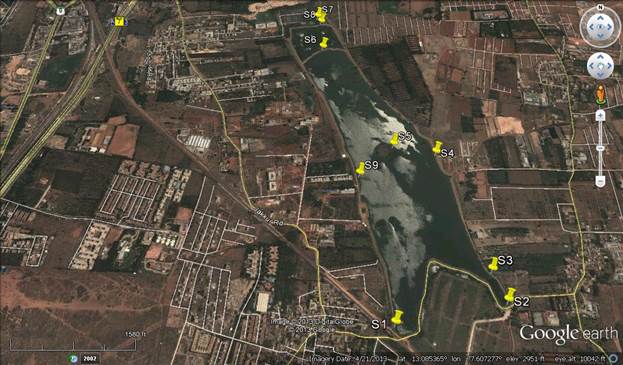 Figure 13: Water sampling locations in wetlands system Figure 13: Water sampling locations in wetlands system
4.2 Integrated Wetlands system
Integrated wetlands system at Jakkur consists of i) treatment plant (treats sewage partially before letting to wetlands, ii) constructed wetlands consisting of macrophytes, iii) algal pond and v) lake (Figure 13). Jakkur lake with wetlands is manmade and constructed about 200 years ago to meet the domestic and irrigation water requirement of Jakkur village located about hundred meters south west in the downstream of the lake (Figure 13).
4.2.1 Nutrients (nitrates and phosphates):Nutrients essentially comprise of various forms of N and P that readily mineralizes (inorganic mineral ions) to enable uptake by microbes and plants. Accumulation of nitrates and inorganic P induces changes in water quality and affects its integrity leading to higher net productivity. Nitrates in excess amounts together with phosphates accelerate aquatic plant growth in surface water causing rapid oxygen depletion or eutrophication in the water. Nitrates at high concentrations (10 mg/l or higher) in surface and groundwater used for human consumption are particularly toxic to young children affecting the oxygen carrying capacity of blood cells (RBC) causing cyanosis (methemoglobinemia). In the present study, nitrate values ranged from 0.2 to 0.38 mg/l and phosphate values ranged between 0.09 to 1.29 mg/l. The nitrate and phosphate values are higher at the wetlands inlets and significantly reduce after the passage through wetlands and algal pond as elucidated in Figure 14.
4.2.2 BOD and COD: BOD and COD are important parameters that indicate the presence of organic content. Biochemical oxygen demand (BOD) is the amount of oxygen required by bacteria while stabilizing decomposable organic matter under aerobic conditions. It is required to assess the pollution of surface and ground water where contamination occurred due to disposal of domestic and industrial effluents. Chemical oxygen demand (COD) determines the oxygen required for chemical oxidation of most organic matter and oxidizable inorganic substances with the help of strong chemical oxidant. In conjunction with the BOD, the COD test is helpful in indicating toxic conditions and the presence of biologically resistant organic substances (Sawyer and McCarty 1978). In this study the BOD values ranged from 17-128 mg/l. There was reduction of 66% in BOD after the algal pond and 23% removal in the water which flows out of the lake. The COD values ranged from 16 to 161 mg/l. The COD reduced by 45% in the algae pond and 32 % in the lake as shown in Figure 14.
4.3 Integrated wastewater management system:
The treatment of domestic sewage in natural systems such as constructed wetlands and lagoons is being practiced in developing nations. Significant advantages are its construction and operation are simple and economically viable (Mahapatra et al., 2011a). Lagoon systems are associated with a high growth rate of phytoplankton that are beneficial and are caused by the influence of light and the continuous nutrient inflow. Algal growth contributes towards the treatment of wastewater by transforming dissolved nutrients into particle aggregates (biomass). Algal retention in the lagoon helps in the treatment, which has to be harvested at regular interval to ensure effective treatment. Wetlands consisting of reed-bed and algal pond help in the removal of nutrients (Mahapatra et al., 2013a,b).
The emergent macrophytes (such as Typha) acts as a filter in removing suspended matter and avoiding anaerobic conditions by the root zone oxidation and the dissolved nutrients would be taken up by the lagoon algae. This type of treatment helps in augmenting the existing treatment system in complete removal of nutrients and bacteria. The combination of wetlands (with macrophyte assemblages), algal lagoon and a sustained harvesting of algae and macrophyte would provide complete solution to wastewater treatment systems with minimal maintenance. Integrated wetland system at Jakkur provides an opportunity to assess the efficacy of treatment apart from providing insights for replicating similar systems to address the impending water scarcity in the rapidly urbanising Bangalore.
The treatment plant (1.6 Ha) with an installed capacity of 10 MLD, comprises of an Upflow Anaerobic Sludge Balnket Reactor (UASB) with an extended aeration system for sewage treatment. The treatment effluent then gets into wetlands (settling basin) of spatial extent ~4.63 hecatres consisting of diverse macrophytes such as Typha sp., Cyperus sp., Ludwigia sp., Alternanthera sp., Water hyacinth sp., etc. in the shallow region (with an area of ~1.8 hectares) followed by deeper algal basin (covering an area of about 2.8 hecatre). This being the significant functional component with macrophytes and algae jointly helps in the nutrient removal and wastewater remediation. The water from the settling basin flow pases through three sluices of which only the middle one was functional in the low flow conditiond during the investigation. This water flows into Jakkur lake that spans over 45 hectares. There were notably less occurance of floating macrophytes, except near the outfalls (~0.5 Ha) due to blockage of the ouflow channels by solid wastes and debris. These macrophytes are being managed by local fishermen. Water in the Jakkur lake is clear with acceptable phytoplankton densities and abundant diversity indicating a healthy trophic status.
The nutrient analysis shows (illustrated in Figure 14), that treatment happens due to immergent macrophytes of the wetlands and algae, which removes ~45% COD, ~66 % BOD, ~33 % NO3-N and ~40 % PO43—P. Jakkur lake treats the water and acts as the final level of treatment which shown as stage two that removes ~ 32 % COD, ~23% BOD, ~ 0.3 % NO3-N and ~34 % PO43—P.. The synergestic mechanism of sewage treatment plants followed by wetlands helps in the complete removal of nutrients to acceptable levels according to CPCB norms.
Jakkur STP has been reported to treat only 6 MLD of sewage that is drawn from Yehanka town. Yet untreated sewer channel were observed carrying voluminous wastewater into the Jakkur systsem along side the treatment plant effluents. The major nutrient removal and polishing is done by the manmade wetland and the lake. This wetland comprise of emergent macrophytes as Typha augustata, etc and thus provide key role of oxygenation in soil subsystems through root zone oxidation and entrapment of necessary nutrients that otherwise would cause an algal bloom in the lake. The algal species in this manmade wetland region (Figure 15) primarily comprised of memebers of chlorophyceae followed by cyanophyceae, eugelnophyceae and bacillariophyceae (Figure 16). The relative abundances are provided in the pie-diagrams below.
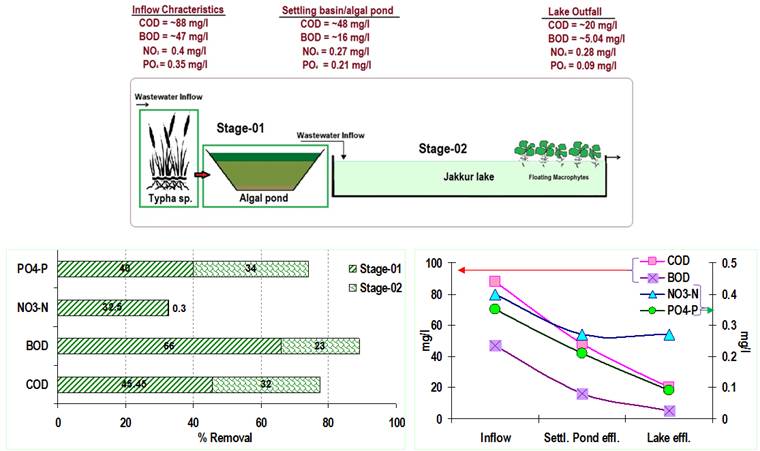 Figure 14: Integrated wastewater management system Figure 14: Integrated wastewater management system
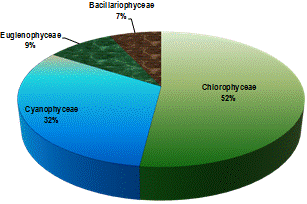
Figure 15: Composition of algae in manmade wetland system
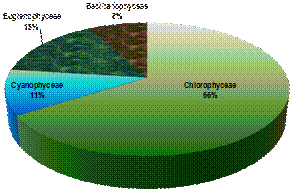
Figure 16: Composition of algae in Jakkur lake
Similarly macrophytes play an important role in the effluent stabilisation. The distribution of the macrophytes in the wetland area as well as at the outfalls of the lake is provided in Fig. 17. Typha augustata species were dominating (54%) in the wetland area followed by Alternanthera philoxeroides (28%). However even though the macrophyte population was scarce in the lake, but still amongst them Eicchornia crassipes (84%) were dominating (Fig. 18), which were only restricted to the outlet reaches provisioned by the net intervenetion to aid fishing and restrict floating macrophyte growth in the core fishing area.
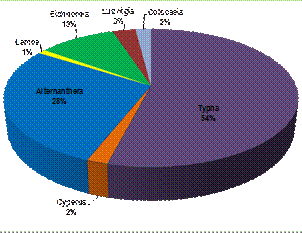
Fig. 17 Composition of macrophytes in manmade wetland system
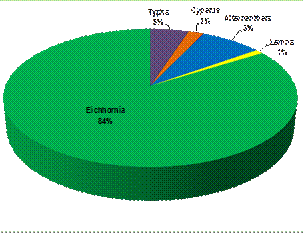
Fig. 18 Composition of macrophytes in Jakkur lake
-
4.4 Integrated Wetlands Ecosystem: Sustainable model to mitigate GHG emissions
Performance assessment of an integrated wetland ecosystem at Jakkur provides vital insights towards mitigating water crisis in Bangalore. An integrated system as outlined in Figure 19. The sewage treatment plant followed by wetland systems would help in treating water for sustainable recycle and reuse.
4.4.1 Functional aspects of the integrated wetlands systems
Sewage Treatment Plant (STP): The purpose of sewage treatment is to remove contaminants (Carbon and solids) from sewage to produce an environmentally safe water. The treatment based on physical, chemical, and biological processes include three stages – primary, secondary and tertiary. Primary treatment entails holding the sewage temporarily in a settling basin to separate solids and floatable. The settled and floating materials are filtered before discharging the remaining liquid for secondary treatment to remove dissolved and suspended biological matter. The effluents of STP are still nutrient rich and needs further treatment and stabilization for further water utilities in the vicinity.
Integration with wetlands (consisting of typhabeds and algal pond) would help in the complete removal of nutrients in the cost effective way. A nominal residence time (~5 days) would help in the removal of pathogen apart from nutrients. However, this requires regular maintenance of harvesting macrophytes and algae (from algal ponds). Harvested algae would have energy value, which could be used for biofuel production. The joint activity of algae and macrophytes in the wetland systems helps in the removal 77 % COD, ~90 % BOD, ~33 % NO3-N and ~75 % PO43—P. In the case of integrated wetland systems algae plays a major role in C footprint reduction by actively uptaking the the C in dissoved form (carbonic acid, bicarbonates and carbonates) and also has the ability to take dissolved organic carbon in the dark and thus has great potential to immobilise C (upto 80 % of the total input C) in the biomass.
Pilot scale experiment in the laboratory has revealed nutrient removal of algae are 86%, 90%, 89%, 70% and 76% for TOC, TN, Amm.-N, TP and OP respectively and lipid content varied from 18-28.5 % of dry algal biomass. Biomass productivity is of ~122 mg/l/d and lipid productivity of ~32 mg/l/d. Gas chromatography and mass spectrometry (GC-MS) analysis of the fatty acid methyl esters (FAME) showed a higher content of desirable fatty acids (biofuel properties) with major contributions from saturates such as palmitic acid [C16:0; ~40%], stearic acid [C18:0; ~34%] followed by unsaturates as oleic acid [C18:1(9); ~10%] and linoleic acid [C18:2(9,12); ~5%]. The decomposition of algal biomass and reactor residues with calorific exothermic heat content of 123.4 J/g provides the scope for further energy derivation (Mahapatra et al., 2014).
The study reveals that surface water-bodies (lakes, ponds, tanks, etc.) in Bangalore are subjected to high nutrient loads due to the sustained inflow of untreated or partially treated sewage, altering physico-chemical and biological integrity of water bodies. The treated water from sewage treatment plant in Jakkur still contains nutrients as primary and secondary treatment does not completely remove nutrients. However, passage of STP effluents through wetlands (consisting of emergent macrophytes and algal pond) ensures removal of nutrients to an extent ensuring portability of water. This study investigates the water quality at different stages in the integrated wetland system. Physico-chemical and biological parameters were monitored as water enters the algal pond (wetland) from the STP (sewage treatment plant), outlet of wetlands and at the inlet, middle and outlets of Jakkur lake. The nutrient analysis highlights of nutrient removal by wetlands due to macrophytes and algae, which removes 77 % COD, ~90 % BOD, ~33 % NO3-N and ~75 % PO43—P. The first stage comprising of emmergent vegetataion and algal pond removes ~45% COD, ~66 % BOD, ~33 % NO3-N and ~40 % PO43—P. Jakkur lake as a seconf stage treats the water and acts as the final level of treatment and removes ~ 32 % COD, ~23% BOD, ~ 0.3 % NO3-N and ~34 % PO43—P.The combination of all the stages leads to a complete removal of nutrients to acceptable levels according to CPCB norms. This study provided vital insights towards environmentally sound option of managing wastewater, while mitigating GHG emissions.
Citation : Ramachandra T V and Durga Madhab Mahapatra, 2015. The Science of Carbon footprint assessment, In The Carbon Footprint Handbook (ed: S S Kannan), CRC Press, New York, pp: 3-45.
|